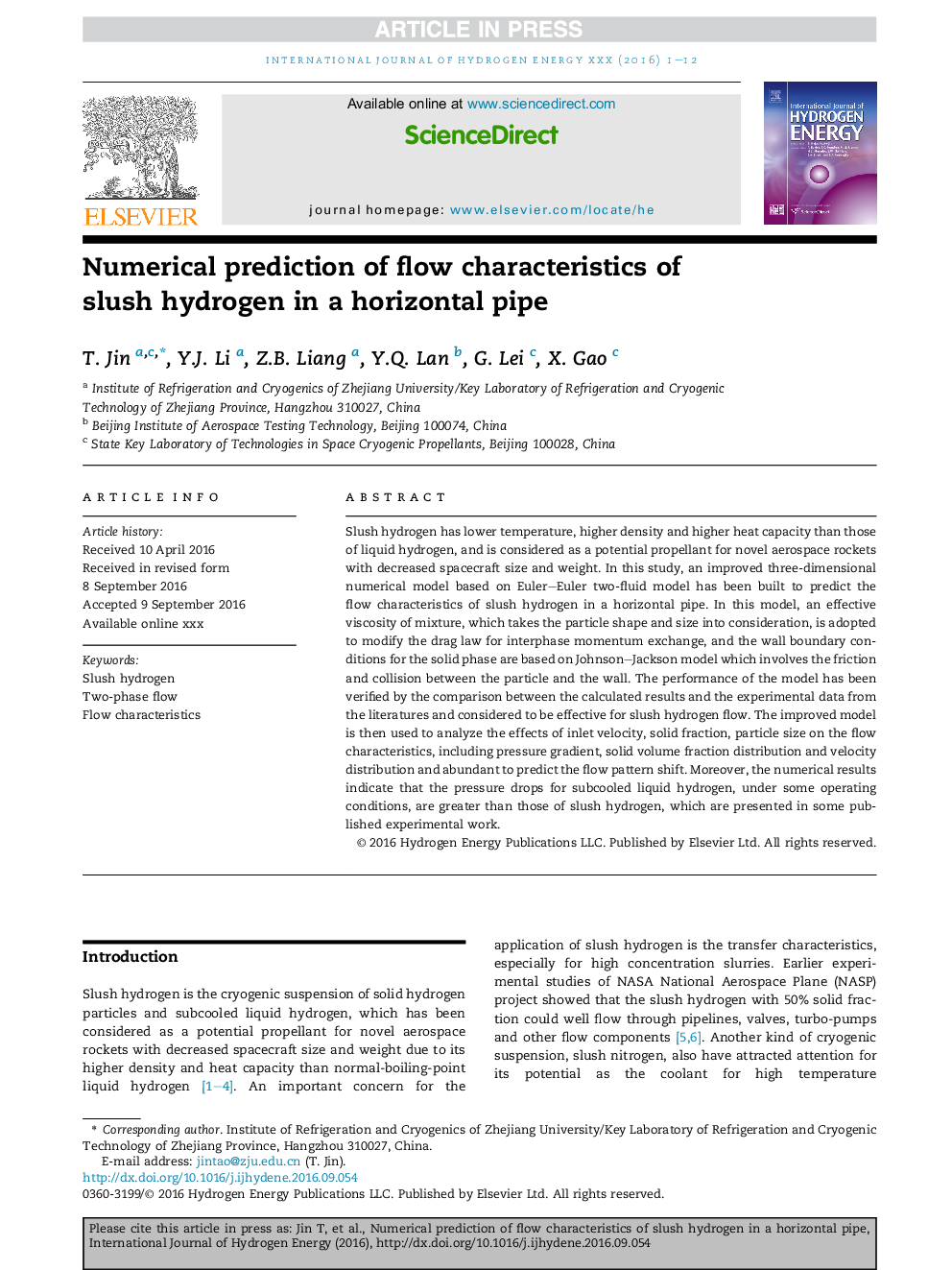| Article ID | Journal | Published Year | Pages | File Type |
|---|---|---|---|---|
| 5148469 | International Journal of Hydrogen Energy | 2017 | 12 Pages |
Abstract
Slush hydrogen has lower temperature, higher density and higher heat capacity than those of liquid hydrogen, and is considered as a potential propellant for novel aerospace rockets with decreased spacecraft size and weight. In this study, an improved three-dimensional numerical model based on Euler-Euler two-fluid model has been built to predict the flow characteristics of slush hydrogen in a horizontal pipe. In this model, an effective viscosity of mixture, which takes the particle shape and size into consideration, is adopted to modify the drag law for interphase momentum exchange, and the wall boundary conditions for the solid phase are based on Johnson-Jackson model which involves the friction and collision between the particle and the wall. The performance of the model has been verified by the comparison between the calculated results and the experimental data from the literatures and considered to be effective for slush hydrogen flow. The improved model is then used to analyze the effects of inlet velocity, solid fraction, particle size on the flow characteristics, including pressure gradient, solid volume fraction distribution and velocity distribution and abundant to predict the flow pattern shift. Moreover, the numerical results indicate that the pressure drops for subcooled liquid hydrogen, under some operating conditions, are greater than those of slush hydrogen, which are presented in some published experimental work.
Related Topics
Physical Sciences and Engineering
Chemistry
Electrochemistry
Authors
T. Jin, Y.J. Li, Z.B. Liang, Y.Q. Lan, G. Lei, X. Gao,
